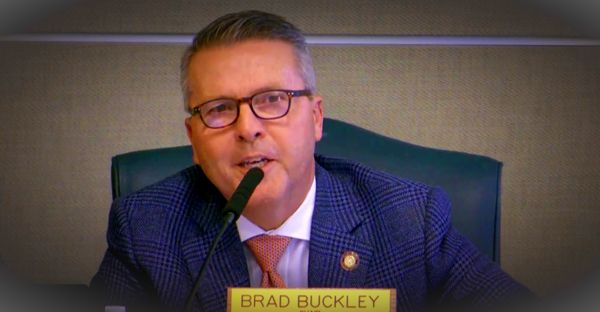
The Eaton fire that devastated Altadena in early January burned down Juan Carlos Perez’s family home and the school where his younger daughter attended sixth grade.
Losing both anchors at once, Perez said, has been traumatizing for the 12-year-old. As the family moved from hotel to Airbnb, his daughter has become increasingly withdrawn and too anxious to return to school, asking to finish the semester online. The only time she interacted with friends was during soccer practice, Perez said, but that routine was suspended last month when the family moved this month to a friend’s house in Connecticut.
“Some days are much harder than others,” Perez said. “She has days where she just isolates herself and doesn’t want to talk to anybody.”
Perez said the Aveson charter school, where he’s also a board member, embraced gender-fluid and neurodivergent children who didn’t always thrive in the traditional public school system.
With a hillside campus that boasted a chicken coop and orchard trees, the school offered innovative project-based, socio-emotional learning that Perez said brought his daughter out of her comfort zone. She fell in love with theater and acted in productions of Shrek and Willy Wonka & the Chocolate Factory.
“It was a strikingly beautiful place,” Perez said. “Our daughter really got the support and comfort she needed.”
When wildfires swept across Los Angeles county in January, thousands of children lost their homes and schools overnight, a traumatic and unprecedented disruption to their education and social lives. In the Palisades and Altadena, about 700,000 students were displaced as a dozen public and charter schools suffered extensive damages; at least five sites were completely destroyed. As students resumed classes online and at new campuses the past couple of months, parents and educators worry that long-term displacement and uncertainty about the schools’ future could have wide-ranging consequences on their children’s mental health.
***
When smoke and toxins rendered her home unlivable, Veena Fox Parekh made the difficult decision to leave Altadena, withdrawing her son from Aveson and resettling in Arizona, where a friend helped her secure housing. The abrupt uprooting of their life has been overwhelming for the nine-year-old who missed his friends and struggled to adjust to the culture at the new school, Parekh said. He didn’t cry or seem depressed but became easily angered and irritated.
“It was as if he became a teenager overnight,” Parekh said, noting that the outbursts made him unrecognizable. “He’s not making the association between his behavior and the trauma of the move.”
At the same time, Parekh has noticed her son’s mood improving during video chats with friends from Aveson. Though the boys never talked about the fire, she said, just catching up and putting filters on each other’s faces has been therapeutic.
Jen Wang, president of Aveson’s parent-teacher association, said more than 70 families lost their homes in the Eaton fire; dozens more, like Parekh, moved away because they lost their jobs or were worried about toxic pollutants and smoke damage.
David J Schonfeld, the director of the National Center for School Crisis and Bereavement at Children’s Hospital Los Angeles, said most children will experience two categories of reactions after disasters like wildfires: anxiety and bereavement.
“The first is fear, the lingering reaction to the event itself,” he said. “The other is the traumatic aspect and the absence of something for the rest of your life.”
Schonfeld said nightmares and sleep problems are other trauma symptoms, as well as appetite changes and depression and irritability. School avoidance, he said, is a common reaction caused by separation anxiety, which explains the decline in enrollment. (Enrollment losses have broader consequences for districts, as it determines how much funding schools receive. Both LA Unified and Pasadena Unified school districts announced impending layoffs after losing thousands of students and funding over the past several years.)
These so-called “adjustment reactions” can linger long after a traumatic event, Schonfeld said. He cited a study which found that, more than a half year after the 9/11 terrorist attacks, 87% of children in New York City still had adjustment issues.
***
LA is home to the largest charter school system in the country, and at least a half dozen school sites were severely damaged in the fires. Fueled by falling enrollment, tensions between charters and district schools have escalated in recent years – some of which were on display over the past months. Perez, the board member at Aveson, said the district school board has not been particularly cooperative about meeting the unique needs of charters or promising to help them rebuild.
LA Unified has directed $2.2bn toward efforts to repair and rebuild three schools damaged in the Palisades fire – Palisades charter and Marquez charter elementary schools and the Palisades charter high school – and renovate all campuses to be more “natural disaster resilient”. The district predicted that students will be able to return to the newly constructed campuses by 2028.
For the remainder of the school year, students at Palisades and Marquez elementary schools will study at two public elementary schools, Brentwood Science Magnet and Nora Sterry elementary. The Palisades charter high school, which has been offering online instruction to roughly 3,000 students for more than two months, is in the process of securing a temporary campus at the vacant Sears building in Santa Monica.
Nina Belden, a parent at the Palisades charter elementary school who lost her home in the fire, said school has provided a sense of normalcy for her son Deacon, who’s six. He loved going to class at Brentwood, which Belden said was bigger and more open than the old campus. But she isn’t sure where the school would relocate in the fall and how far it would be from her rental home in West LA. She’s worried that all the moving may have a destabilizing effect on her son, who isn’t old enough to fully process all that they’ve lost.
Belden recalled a few instances when he asked for a toy he’d forgotten about, and she’d had to remind him that it was in the house that burned down.
“It’s very scary as a parent that we don’t know what the options are,” Belden said.
The Odyssey South charter school, a K-8th grade public charter in Altadena, lost four buildings and 80% of its classrooms in the fire, said its executive director, Carlos Garcia Saldaña.
About 175 middle school students were temporarily moved to the ArtCenter College of Design, while 230 younger students resumed their studies at two Boys and Girls Club facilities. About a third of the student body, about 300 people, have yet to return to school – a result of displaced families moving out of the city, Saldaña said.
“Our students are feeling the change,” Saldaña said. “But they’re tremendously adaptable and flexible with less than ideal situations.”
In early February, nearly a month after the fire, Aveson secured six classrooms at Cleveland elementary school – a campus five miles west in Pasadena – for 200 middle and high school students, said Ian McFeat, the school’s executive director. More students will relocate to the nearby Washington elementary school. The classes are crowded, McFeat said, and operating on two campuses could fracture the community, separating siblings and friends in a way that may be overwhelming for students, parents and faculty.
“The hard thing is just we don’t have enough space,” McFeat said. “Nobody wants things to be where they are right now, but we’re just excited because the kids are back in school.”
Charter schools lease campuses owned by districts, and McFeat said that unlike the LA school district, Pasadena Unified hasn’t yet agreed to help rebuild Aveson. It has, meanwhile, committed to rebuilding Eliot Arts Magnet middle school.
McFeat said the school applied for grants to provide more counseling and other mental health resources, but the process could take months. “The support needed is overwhelming,” he said, adding that the trauma symptoms students are reporting now might be drastically different from what they experience in half a year’s time.
“We recognize this is a marathon,” McFeat said, “a long road to healing.”
***
Burnt-down towns can take many years to revive. One year after the 2018 Camp fire, which scorched the northern California town of Paradise, enrollment in the Paradise Unified school district plummeted from 3,500 students to 1,500. The current student population hovers at about 1,700. Two public high schools destroyed in the blaze took nearly five years and more than $100m to rebuild.
Schonfeld recommended that schools provide “universal support” to all students instead of searching for specific individuals with symptoms of mental illness, and then offer additional academic and learning support for those who are distressed.
The National Center for School Crisis and Bereavement at Children’s Hospital Los Angeles, he said, has also been providing teachers with psychological first aid training.
Schonfeld said surviving a wildfire can permanently alter a child’s personality or behavior, but not always in a negative way.
“People can emerge with stronger coping skills and a desire to help others,” he said. “These events are life changing, but they don’t necessarily damage you.”







